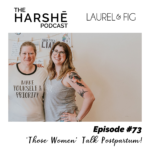
Breast milk is amazing. It provides everything a baby needs to grow into a chubby ball of cuteness. It fights disease. It’s nutritious. It’s delicious (yes!). It’s always on hand, it requires zero preparation, and it’s close to free.
But sometimes, it’s possible to have too much of a good thing.
Enter, OVERSUPPLY. Clad in stained pajamas, she runs to center stage shrieking hysterically. Smelling of regurgitated, rancid milk.
“THE MILK IS COMING, THE MILK IS COMING, WHERE THE F*** ARE THE TOWELS… OH, IT BURNS! IT BURNS!” (Her bountiful bosoms peak as ten or more jets of milk shoot through her shirt. Specs of white milk fall upon the black wooden stage.)
Has Oversupply paid you a visit recently? She’s a regular at our house. Today I’ll share some of the strategies I’ve used to deal with her because, let’s face it, she tends to overstay her welcome. I call my approach MDR: Manage, Donate, Reduce, and I pronounce it ‘moder’ because that’s how they say ‘mother’ in Sweden. Those three tactics, in that order, have allowed me to get my life back. I can leave the house. My breasts are no longer painfully engorged every day. My baby is not a gassy, army-green pooping mess. And I can leisurely get out of the shower without scrambling for a towel because the cold air has triggered my milk ejection reflex and wow, I really don’t have time to wipe that off the floor. But before I begin, I should say this: I haven’t received any compensation for endorsement of the products discussed in this blog. And I am not a doctor, a nurse, or a lactation consultant. Just a mom with a lot of milk.
Manage:
You need to find something to absorb all that milk. Your first stop, of course, is your baby. But while she’s valiantly gulping down the river of liquid gold coming from your right breast, your left is holding its own wet T-shirt contest. You need to get yourself some nursing pads.
If you have hyperlactation, the terry cloth reusable nursing pads are a joke. They were soaked even before they reached my nipple. I splurged on the most expensive reusable bamboo cloth nursing pads, and they didn’t do jack, either. So: disposable. The bad news is that they don’t come cheap, and they go straight into the landfill. The good news is that disposable nursing pads are sold in most pharmacies. And they work.
I have tried all the disposable nursing pads on the market and in my experience, the Lansinoh brand is the best. There’s a lot I don’t like about them: they have the same super-absorbent chemicals as disposable diapers (sodium polyacrylate, yummy!); they come individually packaged (it takes a special kind of idiot to sell a nursing pad in a plastic bag that says ‘keep away from baby’); and they cost $7.50 USD per package of 60. At my peak, I was filling up several of these per breast per day. But if it works, it works, right?
A disposable nursing pad won’t cut it over night. They’re unlikely to cover the nipple as your breast moves in its bra while you toss and turn. Some women have used super-absorbency menstrual pads for this purpose. We co-sleep and my practice was to put a folded cloth diaper (CLEAN, people!) in my bra on the breast that I wasn’t going to nurse off of. I slept in a fresh nursing bra and tank top every night, because they were damp with milk when I woke up. But damp is better than wet! And wet is better than soaked…
Which is what your mattress will be if you don’t protect it. I layered thin, flat receiving blankets under my nursing breast (the one that – sexy! – didn’t have a diaper on it) and put my baby to sleep with his head on top of them. He would spit-up in the night and I would leak while nursing him. This did something to protect the sheets. To cover the mattress, we got a waterproof mattress cover. Concerned about PVC off-gassing into my fresh little newborn baby’s lungs, I shelled out for an organic cotton canvas cover. I’m pretty sure you could just make one yourself from, you know, organic cotton canvas.
OK, so we’ve got the spray under control: you’re not leaking through your shirt because you have a stash of industrial-strength disposable nursing pads in your purse and a few in your bra. You’re not drenching your bedclothes because you have a clean cloth diaper to absorb the milk instead. And your mattress won’t smell like a pair of sweaty gym socks stuffed into a tennis ball canister and left on the dashboard of your car over the summer, because you’ve taken steps to protect it.
My next step was to donate.
I told my mom that I am donating breast milk to another family and she said, “That is such a beautiful, loving thing to do.” If you feel even slightly comfortable donating your breast milk, you should give it a try. It’s worth it. Mom says.
There are three ways you can do this, with varying levels of intimacy. The first is through wet-nursing, which used to be a respectable working-class profession (one in twenty babies born in Paris in 1780 was nursed exclusively by their own mother) and remains common in some parts of the world. Most American moms don’t wet-nurse or have their babies wet-nursed, but I personally think it’s great. If you want to do this, you might casually mention it to your close family and friends – not, “Can I nurse your baby?” but, “I love the idea of wet-nursing – I just have so much extra milk.” Only young babies will take to the breast of a woman who has not nursed them before. When our friend offered her breast to my one year-old son, he smiled, nodded his head, and backed away. It was hilarious.
The second is through local milk-sharing. Check out the Facebook groups Eats on Feets and Human Milk For Human Babies. You can post a bit about yourself and the milk you have to share (is it frozen? are you willing to donate on an ongoing basis? about how much do you produce in a day?) and parents will contact you to arrange a shipment or pick-up. Be honest about your intake of alcohol, nicotine, caffeine, and any other medications and supplements you take. To collect the milk you can use a breast pump – but if you have hyperlactation, you probably won’t need to. I just put my little Medela hand-held pump over my nipple and think about breast feeding. My milk lets down and sprays into the nozzle, down through the flange and into the bottle (could it be any easier?). Add a little bit of pumping at the end to get the engorgement down and it is heaven.
While you pump/moan in relief, you can use an O-cal-ette cup on the other nipple.*  O-cal-ette cups have been around forever and are about a quarter as expensive as Milkies/Milk-Savers. They’re little plastic cups which go into your bra and collect milk when it lets down. They have a vent hole at the top (which is great for airing out those nips and preventing thrush) but with the amount of milk I produce, I have to put a piece of tape over it to prevent leakage. Depending on your arrangement with your recipient family, you might store the milk in breast milk freezer bags or in sterile jars in the fridge.
O-cal-ette cups have been around forever and are about a quarter as expensive as Milkies/Milk-Savers. They’re little plastic cups which go into your bra and collect milk when it lets down. They have a vent hole at the top (which is great for airing out those nips and preventing thrush) but with the amount of milk I produce, I have to put a piece of tape over it to prevent leakage. Depending on your arrangement with your recipient family, you might store the milk in breast milk freezer bags or in sterile jars in the fridge.
*In fact, these may be a good option for use around the house.
Lastly, you can consider donating to an established milk bank. Because I don’t like it when people try to get me to donate my bodily fluids for free so they can sell it at a large profit, I avoid banks like Prolacta. You can find your nearest non-profit milk bank through the Human Milk Bank Association of North America. To qualify as a milk donor, you will have to complete a short phone interview and a home blood test, which they pay for.
Reduce:
Before you take steps to reduce your milk supply, make sure that breastfeeding is established and that you truly do have more milk than your baby needs. It’s harder to increase your supply than to decrease it, so proceed with caution.
The first thing you should know is that, because low milk production is the number one cause of early weaning in the United States, nearly all of the breastfeeding advice out there is aimed at increasing supply. So you, O Madonna of the Moo, can forget about nursing from both breasts during each feeding, pumping extra milk to store, and waking your baby up to nurse (unless your baby is very small and needs it). Instead…
- Block feed. Nurse on cue, but nurse from one breast only. Do this for 3-4 hours at a time and then switch (and hold your baby at bay for the first few minutes of that let-down; your unnursed boob is going to rival the space shuttle Atlantis in its, uh, lift-off).
 Block feeding is the most effective way to decrease your milk supply. But it also increases your risk of blocked milk ducts. Blocked milk ducts can lead to mastitis. So pay careful attention to your breasts, noticing if they develop any painful, hard, hot lumps. If so, immediately nurse from that breast, aligning baby’s nose with the lump. (If you are also nursing a toddler, get them to do it. Bonus points for nursing a toddler!) You may have to place baby on the floor and dangle your breast into his/her mouth to do this (breastfeeding! It’s glamorous!). You can also place hot compresses on the lump. If it does not go away within 24 hours or you develop a fever, head in to your healthcare provider, stat.
Block feeding is the most effective way to decrease your milk supply. But it also increases your risk of blocked milk ducts. Blocked milk ducts can lead to mastitis. So pay careful attention to your breasts, noticing if they develop any painful, hard, hot lumps. If so, immediately nurse from that breast, aligning baby’s nose with the lump. (If you are also nursing a toddler, get them to do it. Bonus points for nursing a toddler!) You may have to place baby on the floor and dangle your breast into his/her mouth to do this (breastfeeding! It’s glamorous!). You can also place hot compresses on the lump. If it does not go away within 24 hours or you develop a fever, head in to your healthcare provider, stat. - Stop pumping. Did you hear what I said? Stop pumping. JUST STAHP. Pumping mimics the sensation of suckling which is precisely what gets the milk production process started. Some people will tell you to pump for the first few minutes of your let-down to capture the foremilk so the baby can get some hindmilk. This well-meaning advice has ruined countless tank tops. Babies need fatty milk, but the distinction between fore- and hind-milk is not clear-cut. If you let your initial let-down spray into an unused diaper (CLEAN, PEOPLE), and then let your baby latch on once it’s reduced to a steady drip, you should be fine.
- Side-nurse. If you nurse lying on your side or with your babe lying on top of you, your ejection reflex won’t be nearly so active. I pretty much only nurse my baby lying down on the bed (or grass, or sand, or carpet…). When I decide to nurse her in the Beco, I de-latch her as soon as the let-down comes, pinching my nipple in two fingers before I can cover it with the nursing pad. Then I let it spray for at least a minute while she wails like the wronged creature she is.
- Drink a cup o’sage. I’ve never tried this, but apparently sage decreases blood estrogen levels. So if you drink a cup of sage tea in the evening, it will decrease your milk supply. Try it and tell me how it works out.
And now, a survey: raise your hand if your milk let down while reading this post.
Mmm-hmmm. I thought so.











26 Comments
Kelsey Lieuallen
I so so so wish I had been able to read this eight.years ago with my first. I never even knew the term “letdown.” What, you mean when you take your bra down and immediately spray your poor infant in the face? She could barely latch on without practically drowning! I had so much milk with my first that I could feed her and then STILL pump two huge bottles of milk after. I personally believed she never gained weight quickly because she could never get to the hind milk. Thank you for sharing this, number three is in the way and I may need your methods!
Jessie
I loved this post. It’s my life right now… And at work, it’s a joke… I have to pack an extra uniform shirt with my pump because if I don’t go (run!) to pump the minute it’s time, I have a soaked shirt and a stream following me.
Jessica Draper
I soooooooo needed this today!!!
Ana
In the article you mention gassy green pooping baby..is that from oversupply? ‘Cause that’s happening with me right now!
Svea Boyda-Vikander
Ana,
There are a few things that can cause gas and green poop in babies – sometimes it’s just normal (a bit of gas, and green poop – if baby’s not uncomfortable, it’s not necessarily a problem), sometimes it’s a food allergy, but often it is due to oversupply. Do you have a breastfeeding-knowledgeable healthcare provider you can talk to? If you know that you definitely have too much milk and BFing is well established, you could try some of the methods I mentioned above. Definitely, side-nursing has reduced my babies’ gassiness.
In poop,
Svea
Nicole
Gassy green poop is usually too much fore milk. Try always start on the same side you ended on to get more hind milk. Block nursing as described above is helpful. Gas can be from your diet; dairy, eggs, garlic, the list goes in. You may find great help consulting with a lactation consultant or contact LA Leche League; there’s so much support out there. 🙂
Viv
God wish mine was like that, I have a few problems, my left is slow let down and only end up feeing 1/4 times on that one compared to the other and im trying to up it and cant seem manage!! I have a bit stored but wanting to store more for when go bk to work and its just not happening! Swap?? lol
Would love to wet nurse another child or donate if i ever could!
Jessie
I had a good and generous supply of milk, with my 1st and 3rd but never the major engorgement and oversupply issues you mention. I did however have a good squirting reflex at times and if one of our kittens meowed after the birth of our first I would let down (sounds enough like a mewling infant I guess). I did discover by accident that peppermint tea can also lower supply. My eldest used to get quite gassy and I heard that drinking it can help ease the wind pains, much like it does for adults. It did however affect my supply so I stopped drinking it. It may be something else to add to the arsenal to help so thought I’d mention. 🙂
P.S. I also donated milk when I had my 3rd (a home water birth thanks to the support from BWF) and it is an incredibly rewarding experience. I went through HM4HB here in Australia and they are awesome.
Abbey
My tiny little not even A cups GUSHED for the first 12 months I nursed! Every day, stained soaked shirts. Every time my babe nursed I had a blanket, sweater, or something held up to the other side. Nursing pads were a joke, and never convenient for me. But I did end up investing in really good stain remover spray. My supply finally got under control as my babe stopped the comfort nursing as much and began eating a little bit of solids. Now He has weaned himself and I’m 7 months pregnant and STILL LEAK! At least my babe will have enough milk right?
Jennifer
Yup that was me with my first, although a little less drastic. I bought the same nursing pads in BULK from Amazon because God forbid I run out of them. I pumped after 2 months because I wanted to stock up before I went back to work since most people experience a decrease when returning to work. Not me. I continued to produce despite me only pumping once during my working hours, so basically once during a 10 hr period, and yet my freezer stash continued to grow and then I gave up and donated the majority of my milk through Human Milk 4 Babies (I didn’t like the idea of my milk getting processed and possibly sold). My milk and let down finally regulated when my daughter was around 1 and I continued to breastfeed her until she was a little over 2.
I was totally not expecting that since I’m barely a B cup and I had a c section, but I was honestly happier to deal with oversupply than a lack of, although engorged & fire hydrants of breasts for a a year was not joke either.
Kaitlin
YES.
Thank you so much for posting this. I just gave birth to my second child, and am dealing with more of the same issues with oversupply. My milk just came in and I’m finding I already have to have her feed 3-4 times on a side in a row before switching. I want to be able to have some milk stored but pumping seems like the most counterproductive thing right now I could do 😛
Alicia Cooper
I experienced the same thing and pumped for about 3 months at night after my baby would fall asleep. It dose feel good to have empty breast but then just means your breasts will make even more milk. . . . It is really just personal choice.
Alicia Cooper
Wow, this sounds allot like my nursing adventures with my baby. It is so refreshing to here nursing advice for a mommy like me. Amen to no more pumping. Lol
Alicia
As the article says – be cautious of over reduction – I found the quickest way to reduce breasts to a workable size was with cabbage leaf. Its very quick – like in minutes/hour. Be careful. It only took one application. I also recommend having a nursing tea on hand incase you go too far.
(This is coming form a lactating mum who could not latch a baby because the breast and nipple was stretched so taught that it could not erect)
Thanks
Melissa
Cabbage leaf is great for reducing engorgement, but for the majority of women it shouldn’t affect the actual milk supply. There are compounds in cabbage that open capillaries and helps excess water flow out of the body properly. I’ve used cabbage leaf for engorgement after all my babes were born, and it does awesome! I had a friend warn me against it because she had heard it reduces milk supply, and while I have found ample evidence that it reduces engorgement, I have never been able to find ANYTHING about it reducing milk supply. Nothing what so ever, and I have searched A LOT as I don’t like giving people misinformation.
For severe engorgement issues there is a pressure therapy trick you can do yourself before each feeding. Look up Jack Newman reverse pressure softening. It basically displaces all the excess water long enough for baby to get a good latch, and then the nursing helps move all the build up.
Melissa
I say, for the majority of women, because, hey, every body is different and maybe it will for some few, very few mothers. But it really should not have that affect.
Alicia
Thanks Melissa. Will look into the pressure technique.
Leah
Haha, it felt like let down but since I am only 9 weeks pregnant I didn’t get much. I’m a milk MACHINE and my last nursing experience was really hard. The crazy let down was too hard for him to handle. I’m hoping for a better experience this time round! Will try the sage tea!
peggy vincent
I had a lot of milk and donated/sold it in the mid-Seventies to the San Francisco Mothers’ Milk Bank. My technique was to have a sterile empty bottle, lid off, when I sat down to nurse.
As my baby nursed from one breast, I collected the milk spewing out of the other breast into the bottle. No pumping required.
I returned to work very soon after giving birth all 3 times, but my kids all nurses 2-4 years. While at work, I used manual expression (every breast pump on the market then gave me a breast infection) and usually got 8 oz per 8/hour shift, sometimes more.
Jessica
This is great. I’m glad I’m not the only one. I know I shouldn’t complain because th is issue is much better than not having enough. I did find that cold, fresh, cabbage leaves with the insides scraped with a fork were help! The cold helped with the swelling that comes in the beginning and supposedly they help to gently decrease supply. I’ve used them with my last three and it works well enough for me! That and pumping to take the edge off.
Cheryl
http://www.milkshare.com is also a great website to use for donation.
And yes, it is hard to know donating to a milkbank so that the milk can be sold at high rates, but it is also needed to help preemies and other babies in need.
Sarah
This is exactly how I feel! As I feel my let down begin I think geez, I hope that pad is in the right spot or I will be in my 3rd bra and shirt of the day.
Sarah
Do good to find fellow mom’s with this problem! I am trying sage tea tomorrow and have been Block feeding up to 24 hours! I feel like I got implants. Next step is donating.
Sarah
What was your routine when donating and breast feeding?
Lisa Annabel
Cabbage Leaves are recommended home remedies to decrease breast milk.
TT
This is a great article, thank you so much. You are a talented writer! I think this is the first time I’ve laughed about oversupply… most of the time, I’m crying about it! My breasts are so tender and bruised feeling, I can’t even hold my baby to my chest. Does this feeling ever go away? Thanks again!